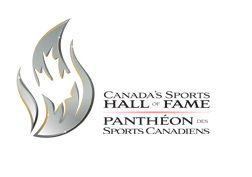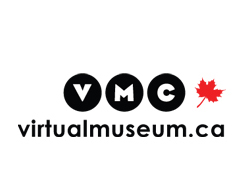Home | Major Sporting Events | Canada Games
Host Communities of the Canada Games
PreviousNext
From the beginning, the Canada Games were staged in smaller cities across the nation. While "national in scope", the competition also celebrated "a warm sense of being local...small and personal enough for Canadians to put their arms around." By 2007, every province and territory had hosted the competition, each time bringing unique local and regional flavour.
Opening and closing ceremonies created opportunities for host communities to proudly celebrate local history and culture. Nearly 13,000 people attended the opening ceremonies for the 1981 Canada Summer Games in Thunder Bay. Celebrating local indigenous culture, the performance included a 90-foot figure of Ojibwa spiritual hero Nanabijou, surrounded by interpretive dancers telling a creation story. Celebrating fellowship, the closing ceremony invited athletes to recreate a 19th century 'rendezvous' at the historic fur trading post of Fort William, accompanied by multicultural dancing. Logos and mascots also reflected the regional diversity of host communities. An enormous Newfoundland dog named Harbour Beem Jack welcomed visitors to the 1977 Canada Summer Games in St. John's, while Brandy the Bison acted as ambassador for Brandon, Manitoba at the Canada Winter Games in 1979, and three huskies named Yuka, Taiga and Uqila symbolized Canada's diverse northern Territories as shared hosts of the 2007 Canada Winter Games in Whitehorse.
Celebrating the 40th anniversary of the Canada Games by showcasing the event's legacy of community spirit, a Flag relay was inaugurated in 2007. Whitehorse set the standard, touring the flag to local landmarks and social hotspots while compiling a video of the Games' voyage into the heart of their community. The Canada Games Flag now travels through all past host communities before the competition, symbolically uniting the country while celebrating the contributions of former organizers and volunteers.
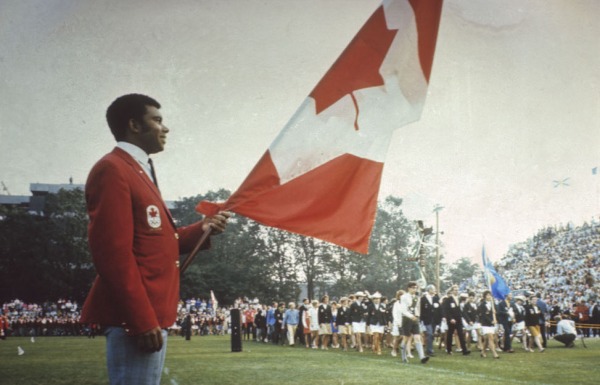
The Canada Games were meant to promote a sense of team unity among the athletes from each of the participating provinces. In the parade of athletes at the 1969 Canada Summer Games in Halifax/Dartmouth the athletes marched behind their provincial/territorial flag. Harry Jerome, who was an inspiration to many of these young athletes with his determination, self-respect and passion for sport, had the honour of carrying the Canadian flag.
Collection: Library and Archives Canada
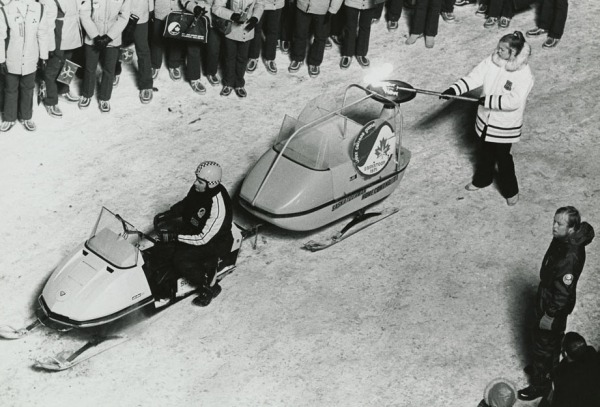
The 1971 Canada Winter Games were held in Saskatoon. The Games flame was brought from Parliament Hill to Saskatoon by snowmobile. Diane Jones Konihowski, who was raised in Saskatchewan and went on to later win gold medals in pentathlon at both the Commonwealth and Pan American Games carried the torch during the relay.
Collection: Library and Archives Canada
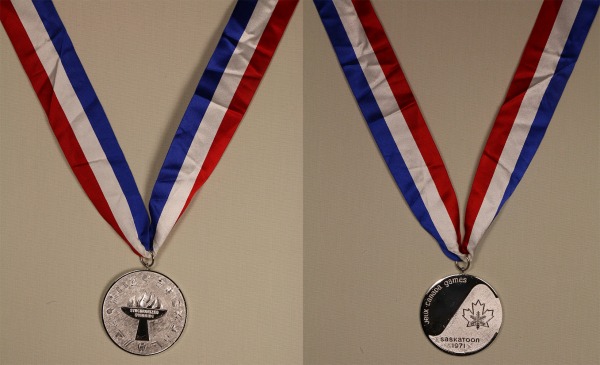
The 1971 Canada Games medal featured a snowflake within a maple leaf on the front. On the reverse side each sport was represented by its equipment. Cathy Priestner from Manitoba was awarded the first gold medal of the Canada Games in the 400m speed skating event. She went on to win the first Olympic medal in speed skating for Canadian women with a silver medal at the 1976 Olympic Winter Games.
Collection: Canada Games Council
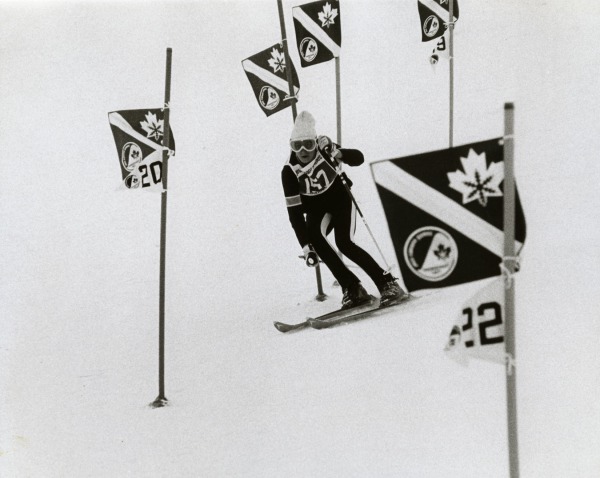
Saskatoon in the middle of the prairies had no mountains for the alpine ski events. Mount Blackstrap was created for the Canada Games with a vertical drop of 100m and a run of about 350m. Greg Athans won gold for British Columbia in the slalom event. He went on to win another gold in waterskiing tricks at the 1973 Canada Games in New Westminster-Burnaby. He was the first athlete to win gold medals at both the Winter and Summer Canada Games.
Collection: Canada's Sports Hall of Fame
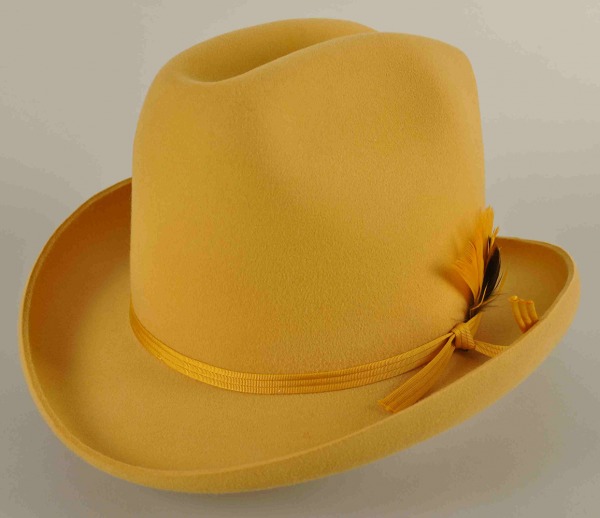
The 1975 Canada Winter Games in Lethbridge were spread over 12 communities. The cowboy hat signified the warm, western hospitality of the host city. The Games organization involved not only the local residents but also a unit of the Canadian Army, who provided communications to ensure the transport of the athletes was coordinated among the 32 school busses and more than 100 cars.
Collection: Galt Museum and Archives
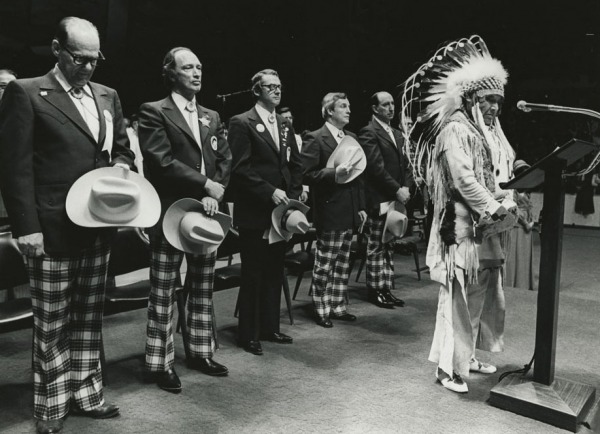
Chief Jim Shot-Both-Sides of the Blackfoot Confederacy opened the 1975 Canada Winter Games in Lethbridge. Then Prime Minister Pierre Elliot Trudeau also attended. Despite the widespread area that had to be covered over 4,000 volunteers ensured the smooth running of the Games. A heavy snowstorm prevented some of the athletes from returning to Lethbridge, so the residents of Bow Islands opened their homes to them.
Collection: Library and Archives Canada
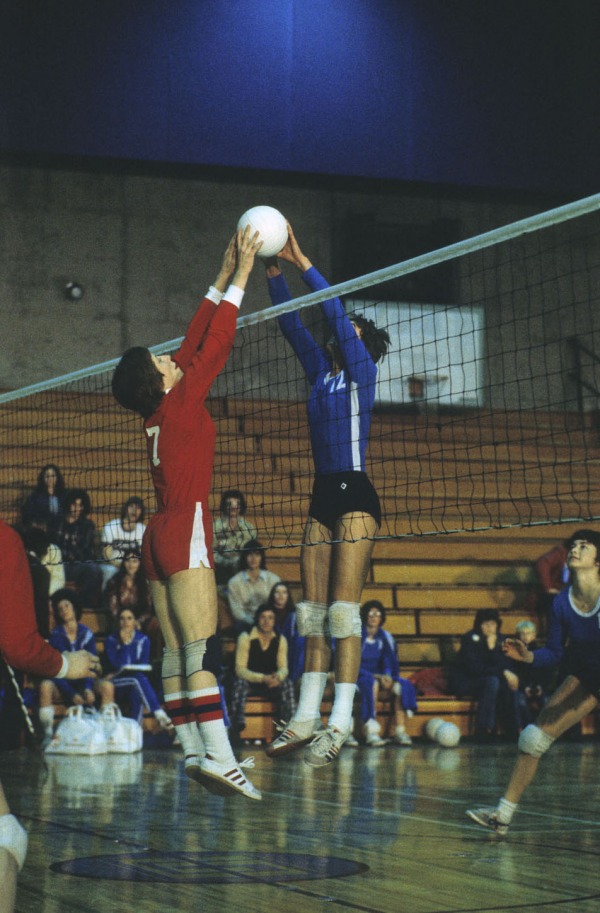
The Canada Games flag, given for the most points by a province, was won by the team from Quebec. Nova Scotia was awarded the Centennial Cup for the team with the most improvement from the previous Games. The original vision of the Canada Games was to see the level of competition improved and the Nova Scotia team showed that this vision was alive and strong.
Collection: Library and Archives Canada
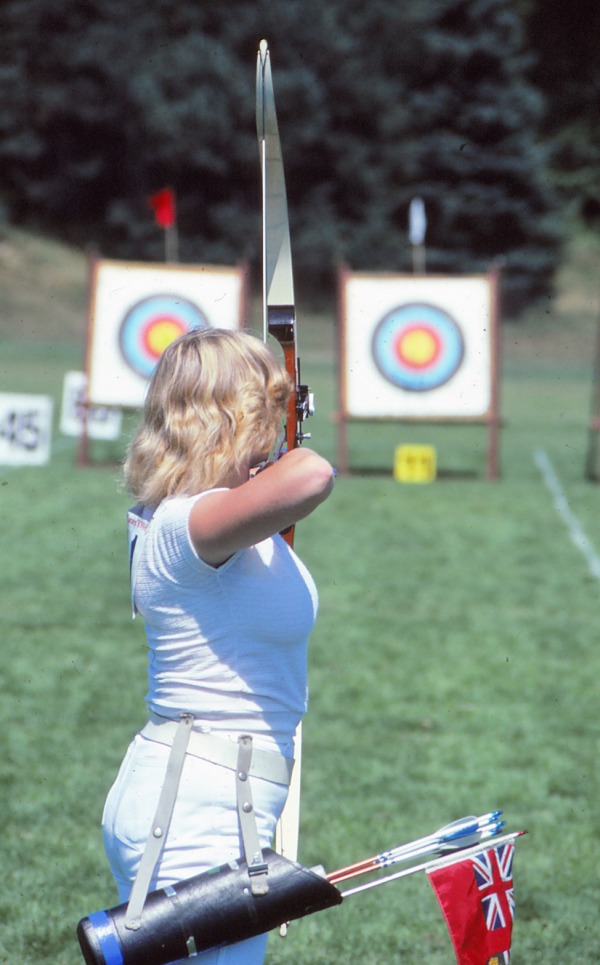
One of the legacies of the Canada Games is improved infrastructures in the host city. The new swimming pool saw nine new records set on the first day of competition. Other events, such as archery, were well supported by the Canada Games attendees. Thunder Bay employed over 7,000 residents as volunteers. The legacy left by these volunteers was a highly trained and motivated corps of people that were available in the community for other events.
Collection: Northwestern Ontario Sports Hall of Fame
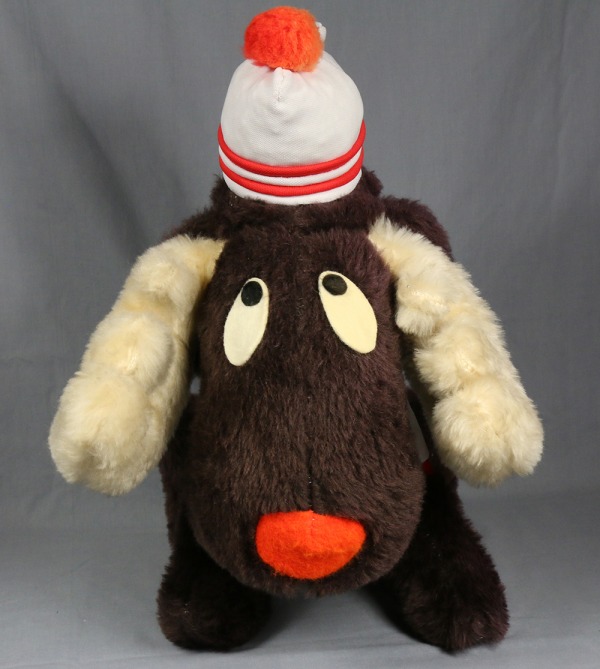
Each host city brings its own unique character to the Canada Games. At the 1981 Canada Summer Games in Thunder Bay the Ojibway's Great Spirit Nanabijou was a central theme at the opening ceremonies. The official mascot for Thunder Bay was Choklit Moose. Mascots for other Games also reflected the unique area of the host city and included a bison, beaver, Newfoundland dog and even Fiddle Edd based on the fiddle head fern.
Collection: Canada Games Council

The 1995 Canada Winter Games were held in Grande Prairie under the theme "Capture the Spirit". The relay torch had the names of 16 Alberta communities from the south of the province to the north. The theme was reflected in the strong community support that ensured that they were a resounding success. The legacy is in the volunteer community and the infrastructures that will ensure continued athletic success for the city.
Collection: Canada's Sports Hall of Fame
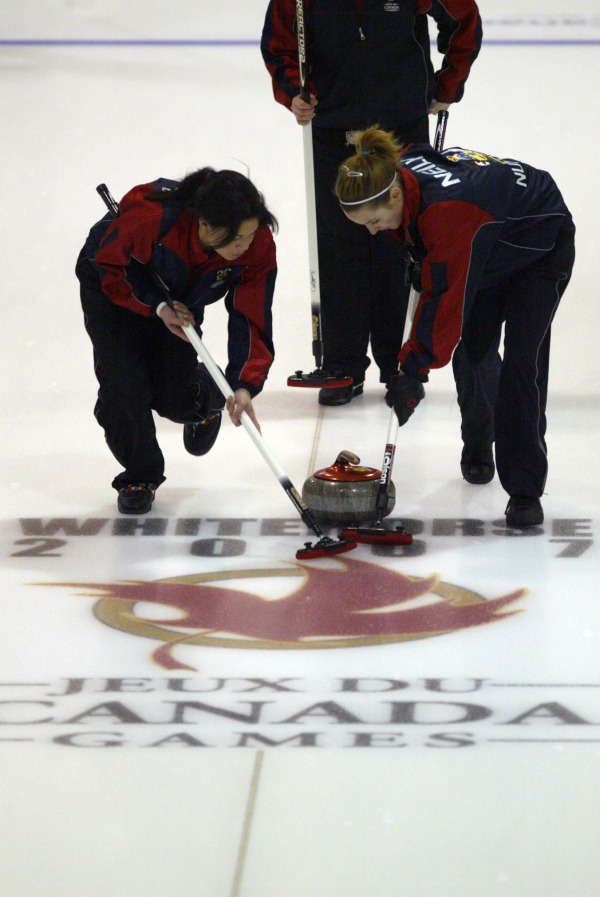
The 2007 Canada Winter Games in Whitehorse, Yukon were the 40th edition and the first time the Canada Games were held north of the 60th parallel. The Games were a collaboration amongst the three territories and were intended to showcase the north and raise their profile to the rest of Canada. The 2007 Host Society logo was the first to incorporate the new Canada Games gold ring and red maple leaf.
Collection: Canada Games Council
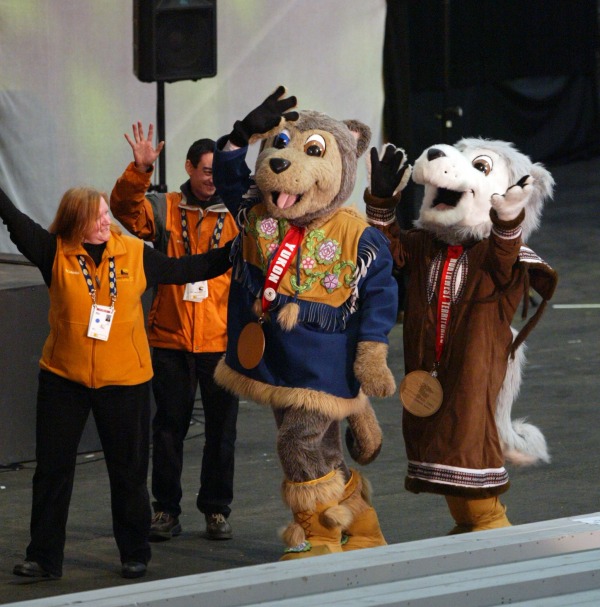
The mascots for the 2007 Canada Winter Games were three huskies, selected to represent each of the three hosting territories. The husky was chosen because it represents the north. Each mascot wore a traditionally designed parka with a seal skin design for Nunavut, a traditional style for the Northwest Territories and one with beadwork for the Yukon.
Collection: Canada Games Council
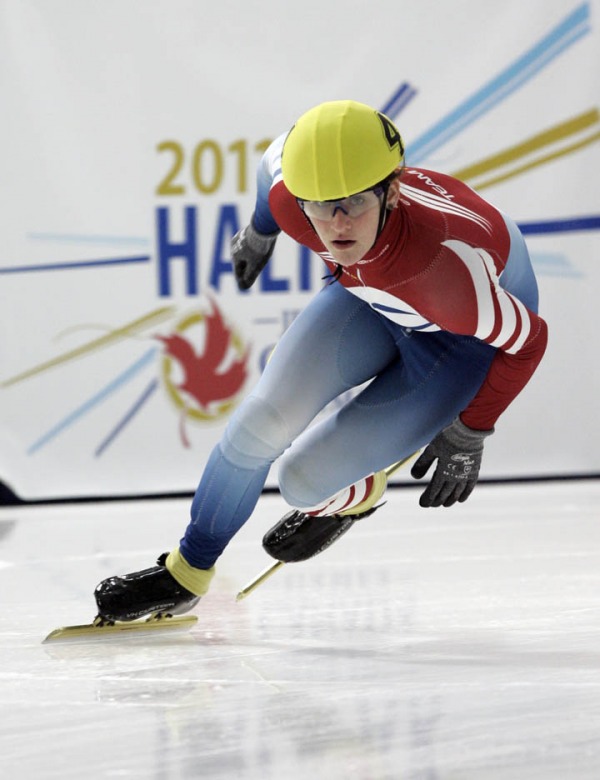
The 2011 Canada Winter Games in Halifax was the largest multi-sport event held in Nova Scotia. More than 2,700 athletes competed in more than 20 sports. Short track speed skating, which was introduced in 1983, was a popular event. Nova Scotia was awarded the Jack Pelech Award for combining competitive performance, good sportsmanship and a spirit of fair play, co-operation and friendship.
Collection: Canada Games Council
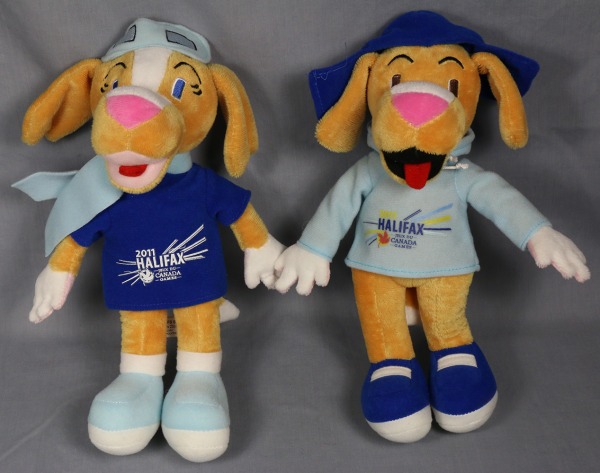
The mascots for the 2011 Canada Winter Games in Halifax were based on the provincial dog, the Nova Scotia Duck Tolling Retriever. The dog is known for its athletic prowess, intelligence, good nature and determination which are attributes of the spirit of the Games. Their names, Angelique/Anni and Samuel/Sammi applied in both English and French to represent the bilingual nature of the Games.
Collection: Canada Games Council
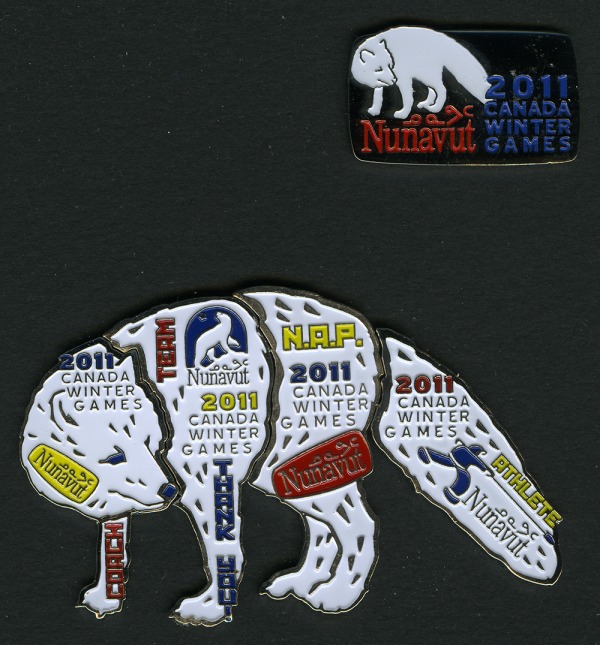
Nunavut athletes first started competing at the Canada Games in 2001. This pin set from the 2011 Games is a composite set combined to make an Arctic wolf. Each section represents a different part of the overall team - the athlete, coach and mission staff. The unique features of this pin set reflect one of the themes of the Canada Games where team unity is promoted.
Collection: Canada Games Council
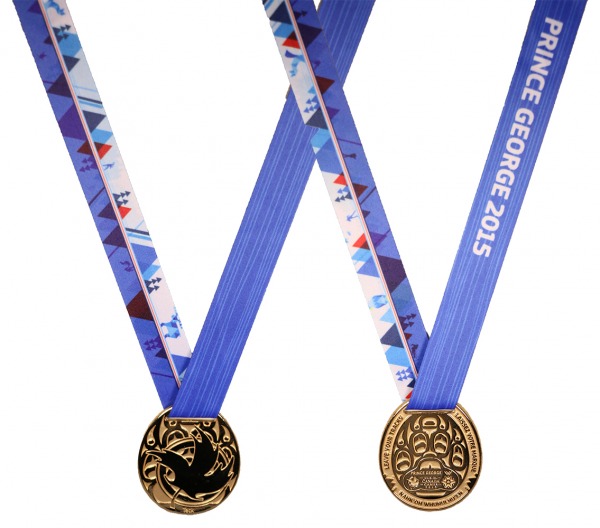
The design of the medal was inspired by the theme for the 2015 Canada Winter Games in Prince George B.C. - 'Leave Your Tracks'. The wolf paw print signifies how wolves work together in their pack just as each athlete works with their team to succeed. A dugout canoe, which pays homage to the Dakelh people, is included. The medal design helped to inspire the 2015 Games athletes, and many went on to set new Games' records.
Collection: Canada's Sports Hall of Fame
Previous Next
